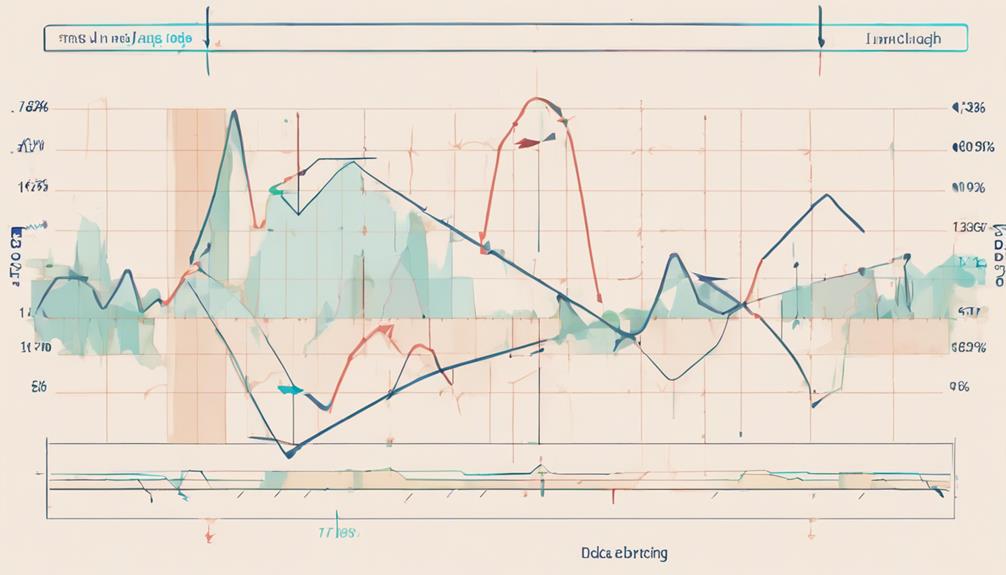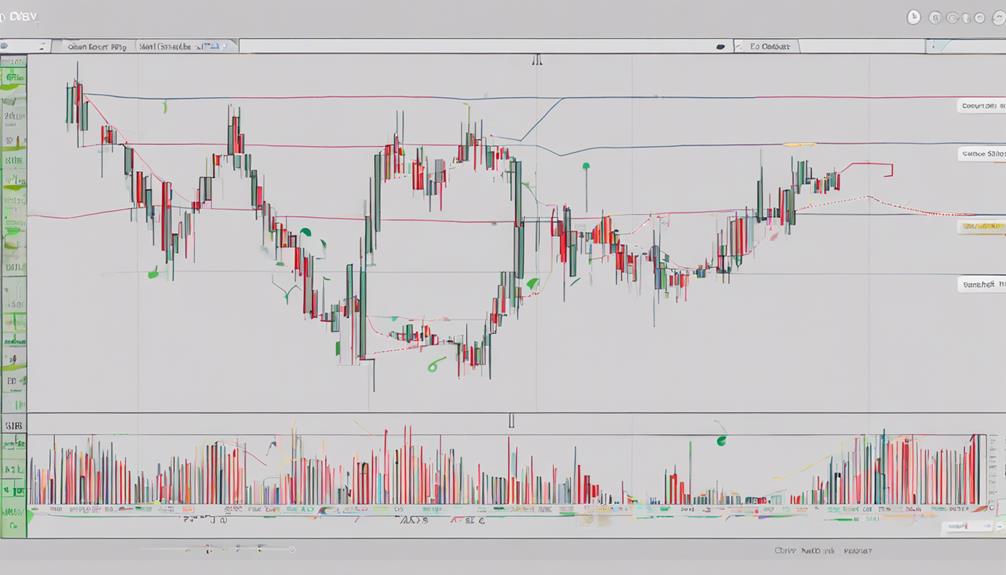Understanding the subtleties of interpreting OBV indicator results can significantly impact trading outcomes. By mastering the three key methods of analyzing OBV—examining price-OBV relationships, anticipating volume shifts, and leveraging OBV as a predictive tool—traders can gain a strategic advantage in the market.
These techniques offer a nuanced approach to decoding market sentiment and identifying potential opportunities. By grasping the implications of OBV data, traders can elevate their decision-making process and enhance their overall trading performance.
OBV Indicator Trends and Patterns
Interpreting the OBV indicator trends and patterns provides crucial insights into the dynamic relationship between volume and price movements in the market. The On-Balance Volume (OBV) is a technical indicator that reflects the cumulative total of trading volume, where volume on an up day is added and volume on a down day is subtracted.
By tracking OBV trends, traders can gauge the strength of buying or selling pressure in the market. Patterns in OBV can signal potential market reversals or continuations, offering valuable information for traders to make informed decisions. Analyzing OBV patterns allows traders to uncover market sentiment and identify possible trading opportunities.
Understanding how the OBV indicator interacts with price movements can enhance decision-making in trading strategies, aiding traders in navigating the complexities of the market landscape. By closely monitoring OBV trends and patterns, traders can stay ahead of market dynamics and position themselves strategically for profitable trades.
Identifying OBV Divergence Signals

Detecting OBV Divergence Patterns can provide traders with valuable insights into potential shifts in market sentiment and trend reversals. When analyzing OBV indicators, recognizing divergence signals is crucial for making informed trading decisions.
Here's how to identify OBV divergence signals:
- OBV Divergence: This occurs when the OBV indicator moves in the opposite direction of the price trend.
- Bearish Divergence: OBV fails to confirm new highs in price, indicating potential weakness in the market sentiment.
- Bullish Divergence: OBV makes new highs while prices lag behind, suggesting a possible uptrend in momentum.
- Monitoring OBV: Keeping a close eye on OBV divergence can offer insights into smart money movements, potential price shifts, and upcoming trend reversals.
Utilizing OBV for Entry/Exit Points

Utilizing the On-Balance Volume (OBV) indicator effectively can aid traders in determining optimal entry and exit points based on volume dynamics and price movements.
When using OBV for entry points, traders should look for confirmation of a price breakout accompanied by increasing OBV, indicating heightened buying pressure. This alignment suggests a strong bullish trend, making it a potentially lucrative entry opportunity.
On the other hand, for exit points, traders can identify weakening momentum by observing OBV divergence from price movements. When OBV fails to confirm the trend, it may signal an impending reversal, prompting traders to consider exiting their positions.
To enhance the accuracy of entry and exit decisions, traders can combine OBV with other technical indicators for validation. Additionally, monitoring OBV trends, spikes, and drops in relation to price action can help anticipate potential reversals or continuations, enabling traders to strategically enter and exit positions for optimal results.
Can Beginners Use the OBV Indicator to Interpret Results Effectively?
Yes, beginners can utilize the OBV indicator effectively with the help of a comprehensive beginner’s guide to OBV indicator. This tool is user-friendly and can assist novices in interpreting market trends and making informed trading decisions. It’s a valuable resource for those new to technical analysis.
Frequently Asked Questions
How Do You Read an OBV Indicator?
To read an OBV indicator, observe its trend in relation to price movements. Rising OBV suggests buying pressure and confirms uptrends, while falling OBV indicates selling pressure and downtrends. Divergence between OBV and price can indicate potential reversals or continuations.
How Do You Analyze Obv?
Analyzing OBV involves examining volume changes for insights into market sentiment. By correlating OBV movements with price action, traders can gauge buying/selling pressure. Divergences between OBV and price may signal potential trend shifts, reinforcing trading decisions.
What Is the OBV Breakout Strategy?
The OBV breakout strategy is a method of identifying trend continuation signals by analyzing the relationship between price movements and On-Balance Volume (OBV). Traders seek confirmation through OBV volume surges to validate breakout strength.
What Is the Best Time Frame for OBV Indicator?
The optimal time frame for the OBV indicator varies based on trading objectives. Daily charts suit swing traders and investors, while intraday traders find value in shorter time frames like 15-minute charts. Long-term investors favor weekly or monthly charts for trend confirmation.
Conclusion
In conclusion, the interpretation of On-Balance Volume (OBV) indicator results is crucial for informed trading decisions.
By understanding trends and patterns, identifying divergence signals, and utilizing OBV for entry/exit points, traders can enhance their strategies effectively.
OBV serves as a valuable tool in predicting market movements and smart money actions.
Just as the OBV indicator reveals hidden patterns in trading volume, it unveils the underlying dynamics of market behavior for astute traders.
